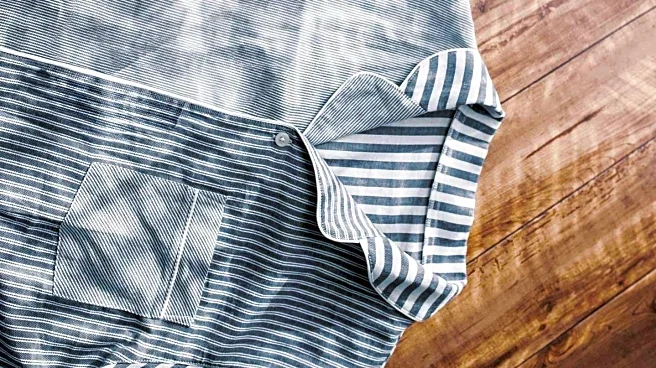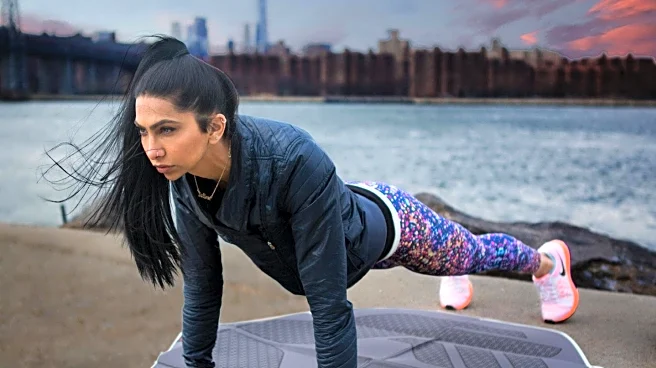What's Happening?
Dr. Kate White, a gynecologist and associate professor of OB/GYN at Boston University, has highlighted the benefits of moisture-wicking underwear for women. These garments are typically made from synthetic fabrics like nylon, cotton, and spandex, which are designed to pull moisture away from the skin and dry faster than regular cotton underwear. Dr. White emphasizes that moisture-wicking underwear can enhance vaginal health by reducing the risk of yeast infections, inflammation, and itching. The underwear is particularly beneficial during workouts, as it helps keep the wearer feeling fresh and dry regardless of the weather conditions. However, Dr. White advises that women experiencing increased discharge or vaginal odor should consult their gynecologist before opting for moisture-wicking underwear, as these fabrics may restrict airflow more than cotton.
Why It's Important?
The recommendation of moisture-wicking underwear by a medical professional underscores its potential impact on women's health, particularly in preventing common infections and discomfort associated with excessive moisture. This advice is significant for women who engage in regular physical activity, as it offers a practical solution to maintain hygiene and comfort during workouts. The broader adoption of such underwear could lead to improved health outcomes and increased awareness of the importance of fabric choice in intimate apparel. Additionally, the focus on synthetic fabrics highlights the ongoing innovation in textile technology aimed at enhancing personal health and comfort.
What's Next?
As awareness grows about the benefits of moisture-wicking underwear, manufacturers may see increased demand for these products, prompting further innovation in fabric technology. Gynecologists and healthcare providers might begin to recommend these garments more frequently, potentially influencing consumer choices and driving market trends. Women may start to prioritize moisture-wicking properties when purchasing underwear, leading to a shift in the intimate apparel industry towards more health-conscious products. This could also spark discussions on the balance between breathability and moisture control in fabric design.
Beyond the Headlines
The rise of moisture-wicking underwear reflects a broader trend towards health-focused consumer products. This development may encourage further research into the relationship between fabric technology and health outcomes, potentially leading to new standards in intimate apparel. Ethical considerations regarding the environmental impact of synthetic fabrics could also emerge, prompting discussions on sustainable production practices. The cultural shift towards prioritizing health in fashion choices may influence other sectors, encouraging innovation in clothing design that supports overall well-being.












